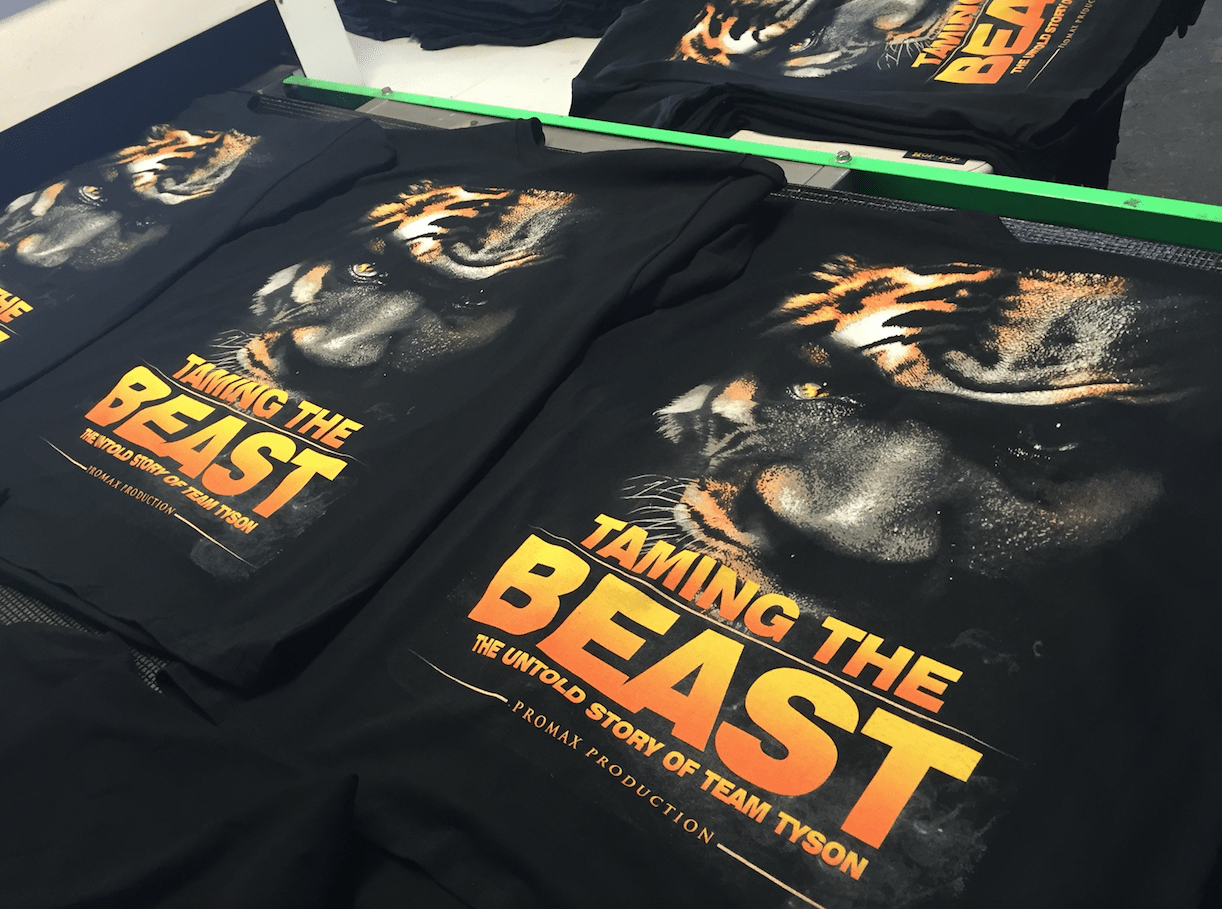Artistic Silk Screen Printing for Limited Edition Prints
Artistic Silk Screen Printing for Limited Edition Prints
Blog Article
Screen Printing Uncovered: Every Little Thing You Need to Find Out About Tee and Garment Printing Techniques
Display printing is an interesting approach that combines art with technique, supplying unlimited possibilities for imagination. All set to explore the vital components that make screen printing an art form?
The Essentials of Screen Printing: How It Functions
When you dive into screen printing, you'll uncover it's both a science and an art. At its core, screen printing entails producing a stencil, or screen, that enables ink to pass with only in details areas.
Following, you'll mix your inks and prepare your printing surface. Setting the display over the fabric, after that utilize a squeegee to push ink through the display onto the garment. This procedure requires precision, as you desire clear, lively prints. After printing, you'll heal the ink with warm, guaranteeing it complies with the textile and lasts through laundries. Each step is crucial, and mastering them will certainly elevate your display printing skills, transforming simple garments into unique, expressive pieces.
Sorts Of Screen Printing Methods
When you comprehend the fundamentals of screen printing, it's time to explore the various strategies that can raise your styles. One prominent technique is typical display printing, where ink is pushed via a stenciled display.
If you're aiming for fine details, consider discharge printing. This technique eliminates dye from the textile, leaving a soft, vintage look. One more alternative is plastisol printing, recognized for its durability and dazzling colors, making it a favorite for lots of brand names. Lastly, trying out halftone printing to create slope results and complex layouts. Each method has its one-of-a-kind charm, so do not be reluctant to attempt them out to discover what suits your style best!
Vital Tools for Screen Printing
To attain spectacular cause display printing, having the ideal equipment is essential. You'll need a sturdy screen printing structure, which holds the mesh that transfers your style onto the garment. Next, purchase premium mops; these are essential for using ink equally across the display. You'll additionally require a good exposure device to produce your displays, along with a washout booth for cleaning them after usage. A trusted heat resource, like a conveyor clothes dryer or heat press, is essential for treating your prints to assure longevity. Don't fail to remember an appropriate office, equipped with tables and storage for your materials. Lastly, safety equipment, such as masks and gloves, will certainly keep you secure from chemicals and inks. With the right devices, you'll be well on your means to generating professional-quality prints.
Picking the Right Inks and Materials
When selecting inks and materials for display printing, you need to take into consideration the sort of ink that functions finest for your job. Think of fabric compatibility to assure your layouts look excellent and last long. Additionally, explore environment-friendly ink options to make your printing procedure a lot more sustainable.
Kinds Of Screen Inks
Choosing the appropriate display ink is crucial for achieving dynamic, sturdy prints that fulfill your project's demands. There are a number of types of display inks to examine. Plastisol ink is preferred for its adaptability and simplicity of use, giving outstanding shade opacity on dark textiles. Water-based ink, on the various other hand, uses a softer feel and is green, making it optimal for those wanting to reduce their ecological effect. Discharge inks eliminate dye from the fabric, causing a soft, classic look however call for specific handling. Specialty inks, such as metal or glow-in-the-dark, can add unique impacts to your styles. Examine your job needs and select the ink that aligns ideal with your desired outcome.

Fabric Compatibility Considerations
Comprehending fabric compatibility is crucial for achieving high-quality screen prints, especially considering that various products respond distinctively to various inks. When choosing inks, consider the fabric kind-- cotton, polyester, or blends. For cotton, water-based inks work well, providing gentleness and breathability. Polyester, on the other hand, often needs plastisol inks for much better adhesion and vivid colors. You could require to utilize a mix of both types if you're printing on blends. Constantly test your inks on example material to guarantee they adhere appropriately and preserve shade integrity. In addition, maintain in mind that material weight and appearance can affect the last end result, so selecting the appropriate ink and product combination is essential for your project's success.
Eco-Friendly Ink Options
Environmentally friendly inks are coming to be a preferred option for screen printers that want to lessen their environmental influence while maintaining quality. When picking inks, take into consideration water-based inks, which are much less dangerous and less complicated to clean up compared to typical solvents.
Additionally, try to find inks made from renewable energies, such as soy or vegetable-based options. By selecting the appropriate inks and products, you'll not only develop stunning designs but additionally add to a more lasting printing process. Make the switch, and your prints will certainly reflect your dedication to the setting!
Preparing Your Design for Screen Printing

File Layout Needs
To guarantee your style looks lively and sharp on material, you'll require to pay attention to submit style needs for screen printing. Beginning with vector files like AI or EPS, as they can be scaled without losing top quality. If you make use of raster images, select high-resolution data, such as TIFF or PNG, ideally at 300 DPI. Stay clear of utilizing JPEGs, as they can lose clarity when resized. Likewise, ensure your layout has a transparent history to stop unwanted white edges on your prints. Finally, maintain shade settings in mind; CMYK is conventional for screen printing, so convert your RGB makes accordingly. By following these guidelines, you'll establish your artwork up for an effective print.
Shade Splitting Up Techniques
Shade separation is a vital action in preparing your layout for screen printing, and grasping it can considerably boost your print top quality. You'll require to break your style right into individual colors, as each shade needs a different screen throughout printing. This accuracy not just guarantees accurate color depiction but likewise streamlines the printing process.
Resolution and Dimension
Achieving the most effective cause display printing starts with ensuring your design has the ideal resolution and size. Ideally, your artwork needs to go to least 300 DPI (dots per inch) for sharp, clear prints. If you make use of reduced resolution, your last product might look less than professional and pixelated.
When it involves size, take into consideration the dimensions of your print location. Design your art work to match the final print dimension, ideally producing it in the real dimensions you'll be publishing. This way, you'll prevent any unforeseen scaling issues.
Always check your style in both vector and raster formats. Vector graphics can be scaled without losing top quality, making them excellent for screen garment printing printing. Preparing appropriately will assure your design looks fantastic on every garment!
Step-by-Step Display Printing Refine
Screen printing is a vibrant process that allows you to produce dynamic designs on different surface areas. To get started, you'll need a screen, emulsion, and your picked ink. Prepare your screen by cleaning it completely. Next, apply the solution evenly and allow it dry in a dark location. Once completely dry, subject your screen to light with your style put on it, which will certainly harden the solution where the light hits, developing a stencil - screen printing kit.
After cleaning out the unexposed emulsion, your screen is all set. Establish it up on your printing surface area and align your garment underneath it. Pour ink onto the screen and utilize a squeegee to press the ink through the stencil onto the fabric. Raise the screen meticulously and allow the print dry. Ultimately, heal the ink using heat to guarantee resilience. That's it! You've effectively screen printed your style.
Tips for Effective Display Printing Projects
While you're diving right into your screen printing projects, bear in mind that prep work is key to success. Start by collecting all your materials-- inks, squeegees, displays, and garments. A clean office helps protect against undesirable mistakes, so clean prior to you start.
Following, validate your art work is high-resolution and properly sized for your garment. Evaluate your display for proper direct exposure and tidy it thoroughly to stay clear of smudges. When mixing your inks, comply with the manufacturer's guidelines to attain the ideal consistency.
During printing, use also stress with your squeegee for regular outcomes. Do not hurry; take your time to confirm each print satisfies your requirements. After printing, allow your garments completely dry completely prior to dealing with or packaging them.
Lastly, always keep a sample of your benefit future reference. In this manner, you can examine your development and improve your methods with time. Satisfied printing!

Regularly Asked Inquiries
How much time Does It Take to Establish a Display Printing Work?
Setting up a screen printing job normally takes about half an hour to an hour. You'll prepare the screens, mix inks, and readjust journalism. The moment differs based on complexity and experience, so remain organized!
Can I Print on Different Fabric Keys In Utilizing the Exact Same Technique?
Yes, you can publish on various fabric kinds using the same strategy, however you'll require to readjust your setups and inks. Some fabrics absorb ink differently, so trying out guarantees the very best results for every product.
What Prevail Mistakes to Avoid in Screen Printing?
When screen printing, avoid usual mistakes like making use of the wrong ink, overlooking appropriate exposure times, or skipping pre-press checks. Constantly check your arrangement and keep tidy screens to ensure quality results each time.
How Can I Appropriately Tidy and Keep My Screen Printing Tools?
To appropriately tidy and preserve your screen printing equipment, you should regularly wash screens with ideal solvents, inspect squeegees for wear, and ensure all devices are saved dry and dust-free. Consistency prevents costly fixings and boosts performance.
Is Display Printing Eco-friendly Compared to Various Other Methods?
Screen printing can be much more ecologically pleasant than various other techniques, especially if you utilize water-based inks and eco-conscious products. By choosing sustainable products and techniques, you lower waste and lessen your influence on the planet.
Display Printing Uncovered: Everything You Required to Know Regarding T-Shirt and Garment Printing Techniques
At its core, screen printing entails creating a pattern, or screen, that allows ink to pass via only in specific areas. Placement the screen over the fabric, then use a squeegee to push ink through the screen onto the garment. One preferred technique is standard screen printing, where ink is pushed with a stenciled display.When picking inks and products for screen printing, you require to take right into account the type of ink that works finest for your project.
Report this page